Mochizu loves books, is a natal spanish speaker, and is studyng software engineering.
Don't wanna be here? Send us removal request.
Text
About Productivity Grids
I’ve seen more and more people starting to use the productivity grids I’ve been using this year to track my progress (which is awesome), along with concerns about them being toxic and putting the focus on “filling in the grid” rather than actually being productive. So! I thought I’d make a post about how I use them and how to avoid that icky feeling that you’re not being “productive enough”.
What is a productivity grid?
Here’s an example of my productivity grid from this week:
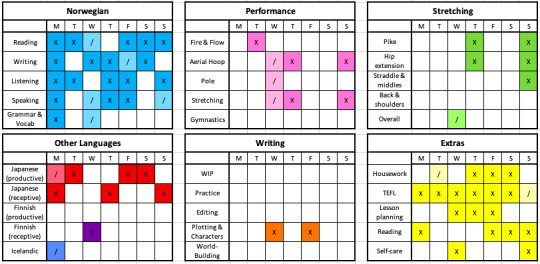
As you can see, I split my different areas of productivity into subsections and mark each day I do them. I fill it in each week, then I take a screenshot to post to my language learning log before clearing it out and filling it in again the next week.
A lot of people use powerpoint for their grids. I use excel with conditional formatting (so I just pop an ‘x’ or ‘/’ in a box and it automatically changes colour, which is super exciting for my dumbass monkey brain). You can use whatever works for you though - I used to print out tables and put gold stars in each square I completed.
What it’s good for
This grid is great for keeping track of things. You can therefore use it to:
See which areas you’ve been working on and which ones you’ve been neglecting. This is a major one for me, because I would go for literally months without doing any speaking practise and only realise when I went back through my blog to find that one recording of me speaking. Now I can see at a glance if I’ve done any speaking practice this week, or last week. All in all, it helps me balance my studying a lot more.
Help you decide what to work on next. Sometimes I get a bit overwhelmed by the choice of what to study. Do I pick up my grammar book? Do I watch the news in my TL? Do I read my book? So then I’ll look at my grid and think “well, I’ve been doing a lot of reading this week but I’ve not spent any time on grammar, so I’ll do that.”
Make sure you’re taking care of yourself. Before I used these for studying, I had a similar grid for self-care, which I filled with things like “went for a walk” and “ate three meals” and “had at least one vegetable” and “read a book” and “talked to a friend”. You can see I’ve included some elements of that in this grid, and honestly I think this is very very important to include.
Understand and predict burn-out. It’s quite easy to see if you’ve been overworking yourself. If you have a lot of full squares one week and a lot of blank squares the next, you can think to yourself “huh, maybe I worked too hard and that wasn’t good for me, clearly I need more balance.”
And of course, it does provide some motivation for yourself if, like me, you love things to be super colourful. Do I sometimes push myself to do a thing just because I want extra colour on my spreadsheet? Yes, absolutely.
Limitations
If you’re looking at this and thinking “I should do that so that I keep myself accountable to my followers”, then I highly recommend you do not use this method. If you do, keep it in a word document for yourself. The goal is not to threaten yourself with a blank grid of shame. The goal is, as I said before, to keep track of things for your own benefit.
Additionally, this only provides quantitative data, and doesn’t give any indication of how much you did. If you spend thirty minutes on an essay every day for a week, you’ll fill more squares than if you spend 5 hours on that essay in one night. Even though you actually spent more time on it, you would seem less “productive”. That’s why I always use it alongside a written log.
Another thing is that there are always situations you don’t account for that don’t fit on the grid. Spent all day cheering up your best friend after her boyfriend broke her heart? Yeah, that’s not gonna show up, so you might end up with a whole day that’s blank.
Some tips for using productivity grids
Be flexible! I’m always swapping my grids around to reflect what I’m working on. I used to have full grids for Icelandic and Finnish, but they took more of a backseat so I shrunk them down to fit in alongside Japanese. You can always add in more grids or take ones out.
Use it to track “unproductive” activities too (if you want). I cannot stress this enough: self-care counts as productive! Cooking yourself a nice meal is productive. Choosing to watch a Disney movie because you’re tired and the thought of studying makes you want to cry is productive. Calling your friend and admitting you’re not okay is productive. Spending time on your hobbies is productive (languages and writing are a hobby for me, so like 70% of my grid is actually devoted to hobbies). Of course, if you then feel like you’re forcing yourself to do your hobbies just to fill in an extra square, take that line out.
Keep a written log of your feelings and accomplishments. In my language log I talk about how well I feel I understood things, how tired I’ve been feeling, what I’ve struggled with and what I’m proud of. This will give more context to your grid, as well as help with identifying those patterns we talked about earlier (if I’m feeling tired and nothing’s working and I notice I’ve not been exercising, I can try the following week to exercise more and compare how I feel).
Never aim for a full grid. You should always have blank spaces - you can’t do everything all the time! If you find you’re consistently filling everything in, you might need to evaluate whether your habits are healthy.
If there are consistently a lot of blank spaces in a particular area, evaluate why. Are you not doing any writing because you’re uninspired? Anxious? Are you just focused on something else right now? Is it so important to you that you do it? Have a think about the reason and whether it’s something that needs addressing or not. (My writing grid is often blank or nearly blank, but that’s fine because it’s not something I want to pursue professionally. My stretching/performance grids being as blank as they are though, well, that is a problem that I need to address.)
If you’re not sure whether something “counts” or not, add levels to it. See how I have some boxes marked with a / instead of an X with a lighter background? Those were when I told myself “this doesn’t really count”. I only stretched when I warmed up, I only spoke a few broken sentences to myself, I did half a Duolingo lesson then quit etc. For a long time, I didn’t mark them in at all. Now I do because I was getting too harsh on myself. You could always try ranking your sessions based on how intense/productive they were, or putting in numbers to show how much time you spent on them. This doesn’t work for everyone though and can add further pressure.
Remember your followers appreciate honesty. Like I said earlier, you don’t have to post these to tumblr; you can keep them for yourself (either in a word document or a spreadsheet or print them out etc). But if you do post them, remember that giving your followers an unhealthy impression of always being productive won’t do them any favours. So embrace those blank squares and don’t feel ashamed.
If you start to feel anxious about how “little” you’re achieving, or like it’s preventing you from being truly productive, stop using it. No method works for everyone and you should never feel pressured to continue using a method that doesn’t work for you just because other people on tumblr do it (just like I never take aesthetic pictures because spending all that time and effort setting them up burns me out before I’ve even started).
Happy studying, everyone! Go smash those goals and remember to look after yourselves while you do it.
313 notes
·
View notes
Text
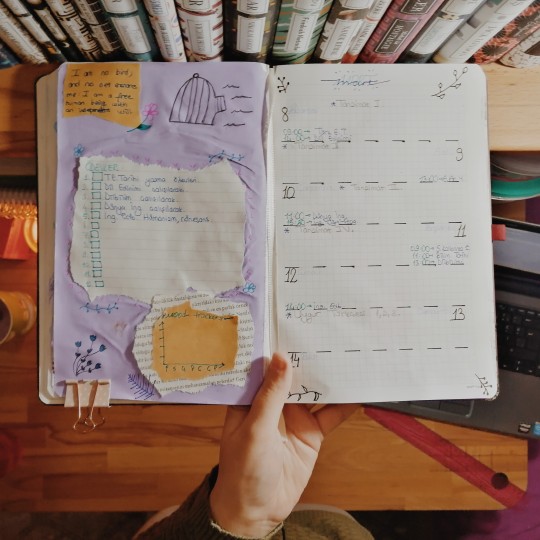
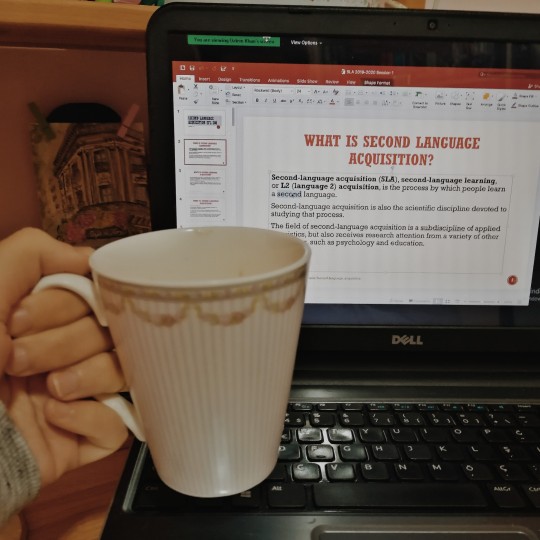

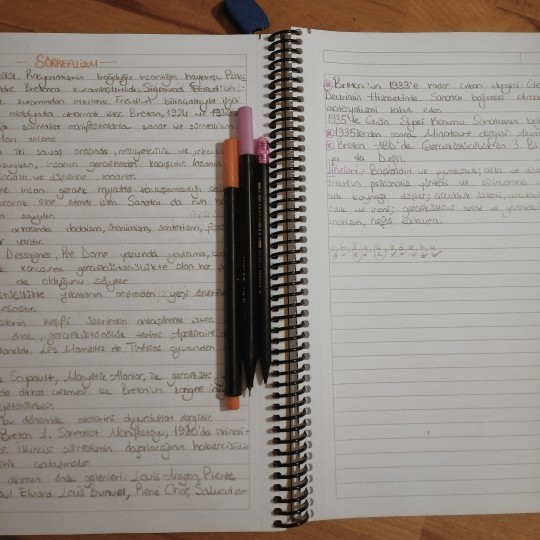


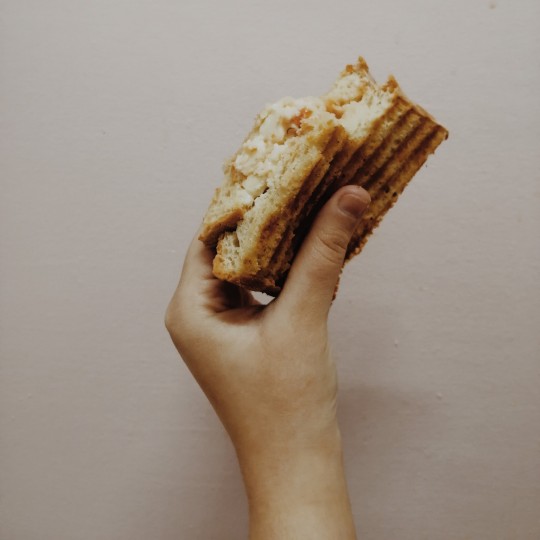
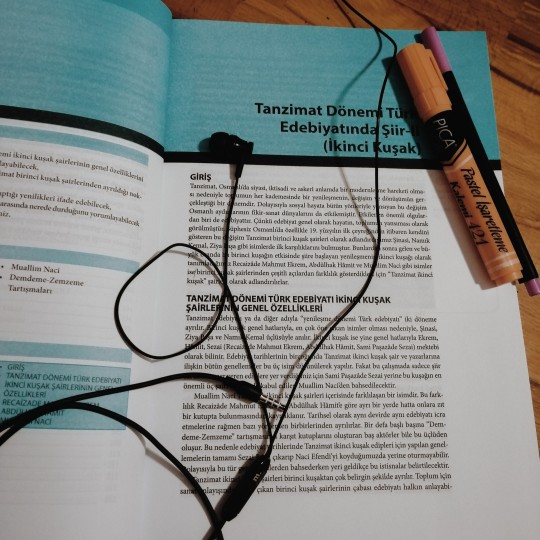
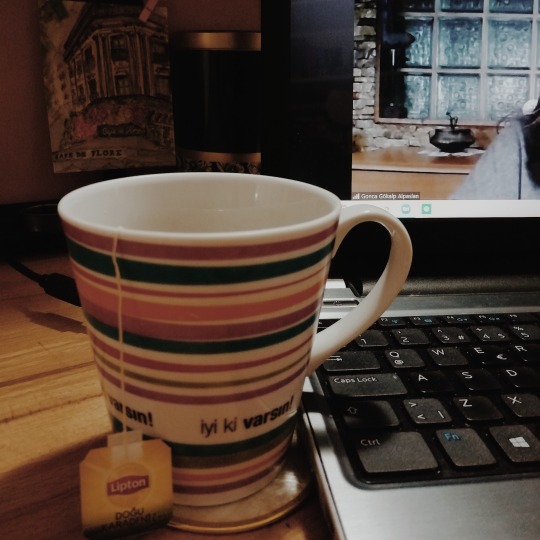
• zoomester studying challenge •
15/100 days of productivity
hello beautiful people! i hope you're safe, happy, and healthy. today's been a busy day, so here are the things i've done so far:
• i studied futurism, lettrism, surrealism.
• prepared my plan for this week.
• attended my language acqusition class.
• attended an online presentation on women's voice in modern turkish literature. it was so good and i learnt so many new woman writers and poems, and their works i've never heard before. the professor who presented it was also so cute and nice. i really enjoyed it!
• i'm now studying poetry in tanzimat reform era.
day 8- international women’s way! what’s your take on feminism?
i think feminism is very misunderstood: so many people think it's about hating men. since i was 14 or 15, when i decided that i agree what feminism defends and is about, i've been trying to inform and explain people that feminism is about equality. it's not about hating men or ignoring their problems. anyways, i think everyone should learn what feminism is actually about because then, they'll see it actually defends rights and demands equality. i love feminism and proud to call myself a feminist because as a person who lives in turkey, i know we need feminism. i know being a feminist and demanding and defending women's rights are so important. i'll always defend women's rights and demand equality. and when i say women's rights i mean each and every woman. trans women, black women, turkish women, women with disabilities, shortly, women all around the world. and happy international women's day! thank you to all women in my life! ♡
take care, good luck, and may it be easy!✧*。
144 notes
·
View notes
Text
read your syllabus early! get a cheap planner + write out all of your due dates, maybe get a calender to visualize dates for big exams + assignments, write your assignments out as soon as you get them, make to-do lists in order of how pressing each assignment is, get a feel for how long different types of assignments take you and allot yourself enough time to get them done, rewrite your notes it will help you memorize, take frequent breaks to stretch and refuel, do not forget to move your body!!
2K notes
·
View notes
Photo
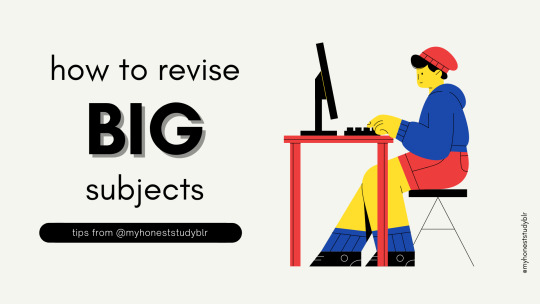
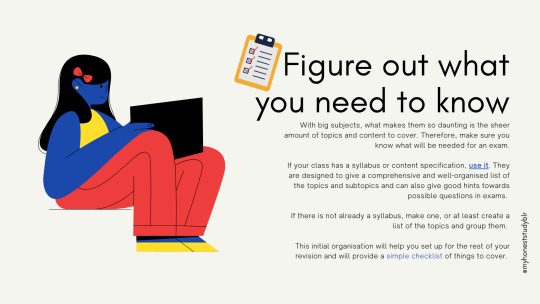
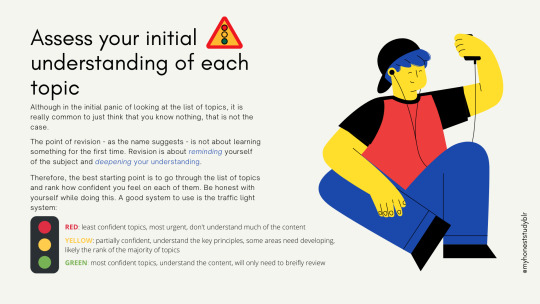




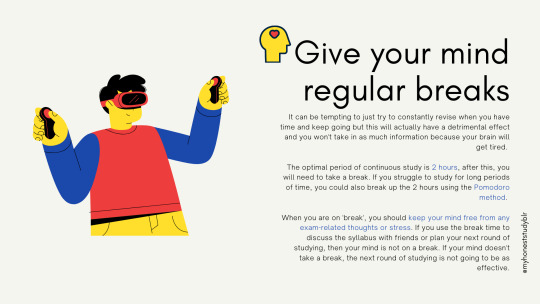
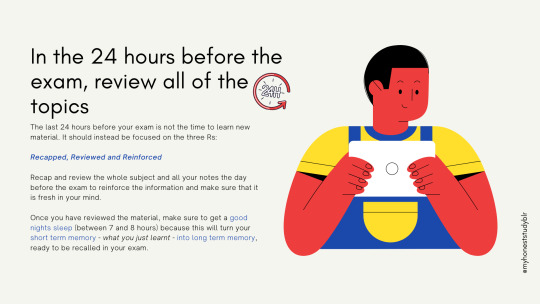
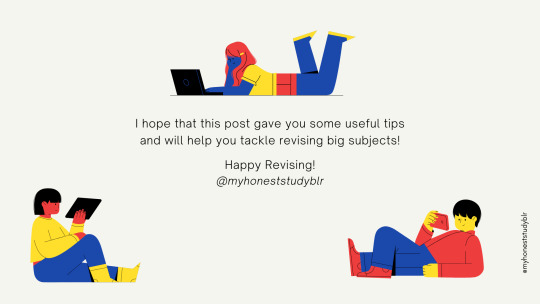
my masterpost | my studygram | ask me anything
[click images for high quality]
Other advice posts that may be of interest:
How To Stop Procrastinating
How To Study When You Really Don’t Want To
Active Revision Techniques
2K notes
·
View notes
Text
How to start!
Make some coffee/ tea / snack.
Instead of spending hours procrastinating on your phone, watch a motivational video while you eat.
Tidy your study space, get rid of dishes, mugs and anything that isn´t study related. Leave your glass of water.
Go wash your face with cold water.
Check time.
Turn off your phone and computer. If your study material is there, turn the wifi off.
Study.
Take a short break. (Go to the toilet, refill your glass, stretch, open a window, listen to music, talk to someone, call your mom, etc)
Follow this sequence four times.
Take a long break. (Get another snack, watch a motivational video, go on a short walk, read a book, do some yoga, take a shower, go outside, doodle, post something on tumblr, take a nap or whatever you´d like to do. DO NOT WATCH A TV SHOW YOU ARE NOT GOING TO STOP AND YOU KNOW IT PUNK. Also, make it so that your break doesn´t last longer that 25 minutes, don´t waste precious time)
Go back, keep studying.
15K notes
·
View notes
Text
Crash Course Linguistics - the full series
The full 16 weeks of Crash Course Linguistics are now available on YouTube. Crash Course offers a face-paced, light hearted, high-level introduction to major areas of linguistics, or you can use it in your teaching or studies as a warm up for these key topics.
This post includes all 16 episodes, which come with English closed captions. For each video I’ve also included a link to the relevant Mutual Intelligibility posts with additional resources and curated Linguistics Olympiad puzzles for you to try. The first five episodes are embedded in this post, but that’s the maximum that tumblr will let me add, so the rest are just screen shots with links to the videos.
I’ve really enjoyed the opportunity to work as part of such a big team on this project. It’s been fun to get into a co-writing rhythm with Gretchen McCulloch, and to work with Jessi Greiser on refining the scripts. The Complexly team behind Crash Course are all enthusiastic educators, and it was also amazing to see the animation team at Thought Cafe bring Gav and all the other content from the series to life. Taylor Behnke has been the amazing host of this series.

(Image: Gav, who even has their own Instagram profile)
Week 0 - Preview
youtube
Preview Mutual Intelligibility post
Week 1 - Introduction
youtube
Week 1 Mutual Intelligibility post
Week 2 - Morphology
youtube
Week 2 Mutual Intelligibility post
Week 3 - Morphosyntax
youtube
Week 3 Mutual Intelligibility post
Week 4 - Syntax
youtube
Week 4 Mutual intelligibility post
Week 5 - Semantics
Video: https://youtu.be/6geQjY8b7sA

Week 5 Mutual Intelligibility post
Week 6 - Pragmatics
Video: https://youtu.be/MPwpk-YgvjQ

Week 6 Mutual Intelligibility post
Week 7 - Sociolinguistics
Video: https://youtu.be/of4XzrbkknM

Week 7 Mutual Intelligibility post
Week 8 - Phonetics, Consonants
Video: https://youtu.be/vyea8Ph9BOM

Week 8 Mutual Intelligibility post)
Week 9 - Phonetics, Vowels
Video: https://youtu.be/qPTL5x0QW-Y

Week 9 Mutual Intelligibility post
Week 10 - Phonology
Video: https://www.youtube.com/watch?v=imH7hdOgxrU

Week 10 Mutual Intelligibility post
Week 11 - Psycholinguistics
Video: https://youtu.be/A5uNFKEn4_A

Week 11 Mutual Intelligibility post
Week 12 - Language acquisition
Video: https://youtu.be/Ccsf0yX7ECg

Week 12 Mutual Intelligibility post
Week 13 - Historical linguistics and language change
Video: https://youtu.be/dNkMC92kFLA

Week 13 Mutual Intelligibility post
Week 14 - Languages around the world
Video: https://youtu.be/Nxyo83cQjhI

Week 14 Mutual Intelligibility post
Week 15 - Computational linguistics
Video: https://youtu.be/3npuPXvA_g8

Week 15 Mutual Intelligibility post
Week 16 - Writing systems
Video: https://youtu.be/-sUUWyo4RZQ

Week 16 Mutual Intelligibility post
1K notes
·
View notes
Text
Free, Public-Domain Audiobooks in Different Languages
https://www.youtube.com/c/GreatAudioBooks/search?query=japanese
I only briefly looked through their channel but they have audiobooks in Japanese, Chinese, Korean, Greek, Hebrew, Russian, Polish, Bulgarian, French, German, Swedish, Danish, Dutch, Italian, Tagalog, Portuguese, and Spanish, and probably more I didn’t see
266 notes
·
View notes
Text
LEARN CHINESE WITH DRAMAS (the king eternal monarch)
嗨!i was watching tkem with chinese subs and some quotes really caught my eye so i decided to make a vocab list with these quotes!~~ this is the first part because i’m pretty tired right now but i’ll do another part if you like. you can check my other post about learning chinese with tv series here. feel free to correct me anytime! 爱你们! 我们一起加油!❤

不是神创造出人类而是软弱的人类创造出神的。bùshì shén chuàngzào chū rénlèi érshì ruǎn ruò de rénlèi chuàngzào chūshén de. “God never created humans. It was the weak who created God.”
神 (shén) god, spirit
创造 (chuàngzào) create, produce
~ �� (chuàng) start, achieve
~ 造 (zào) make, build, create
人类 (rénlèi) mankind, human race, humanity
~ 人 (rén) human
~ 类 (lèi) kind, type, class
而是 (érshì) rather
~ 而 ér and, as well as
软 (ruǎn) soft, gentle, weak
笑过一次之后,你就在也笑不出来了。 xiào guò yí cìzhī hòu, nǐ jiù zài yě xiào bù chūlái le. “You’ve sinned by laughing once and now you can never laugh again.”
笑 (xiào) smile
一次 (yīcì) once
之后 (zhīhòu) later, after, afterwards
~ 之 (zhī) go, leave for
~ 后 (hòu) empress, queen
你要改便你的祈祷吗? nǐ yào gǎi biàn nǐ de qídǎo ma? “Would you like to change the prayer?”
要 (yào) demand, ask, request
改 (gǎi) change, convert, transform
便 (biàn) in that case, then
祈祷 (qídǎo) prayer
所以纯元本希望陛下可以将这一切都忘记。suǒyǐ chún yuán běn xīwàng bìxià kěyǐ jiāng zhè yīqiè dōu wàngjì. “Which is why i wished you (your majesty) had forgotten everything.”
所以 (suǒyǐ) so, therefore, as a result
希望 (xīwàng) hope, wish, expect, want
陛下 (bìxià) your majesty, his majesty
可以 (kěyǐ) can, may, pretty good
一切 (yīqiè) all, everything
忘记 (wàngjì) forget
54 notes
·
View notes
Text

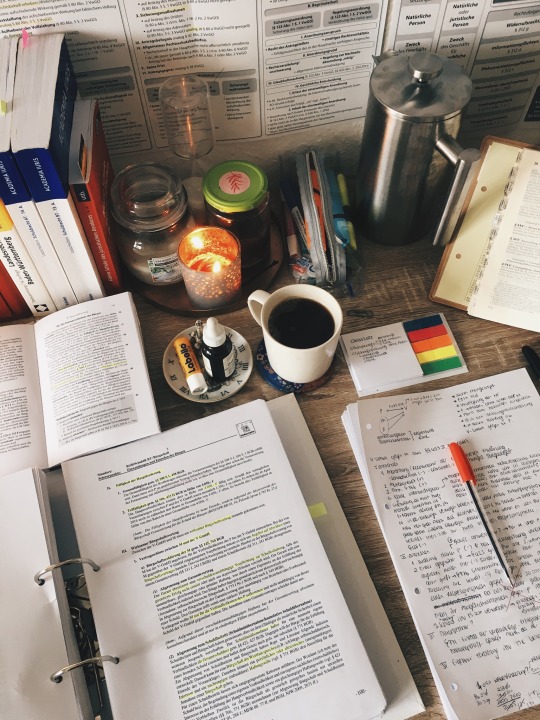
october 4th 2020 - after a three week long break (two weeks of which consisted of mock exams lol) I am slowly getting back into a routine. slow sunday morning with some civil law.
4K notes
·
View notes
Text
Dealing With Executive Dysfunction - A Masterpost
The “getting it done in an unconventional way” method.
The “it’s not cheating to do it the easy way” method.
The “fuck what you’re supposed to do” method.
The “get stuff done while you wait” method.
The “you don’t have to do everything at once” method.
The “it doesn’t have to be permanent to be helpful” method.
The “break the task into smaller steps” method.
The “treat yourself like a pet” method.
The “it doesn’t have to be all or nothing” method.
The “put on a persona” method.
The “act like you’re filming a tutorial” method.
The “you don’t have to do it perfectly” method.
The “wait for a trigger” method.
The “do it for your future self” method.
The “might as well” method.
The “when self discipline doesn’t cut it” method.
The “taking care of yourself to take care of your pet” method.
The “make it easy” method.
The “junebugging” method.
The “just show up” method.
The “accept when you need help” method.
The “make it into a game” method.
The “everything worth doing is worth doing poorly” method.
The “trick yourself” method.
The “break it into even smaller steps” method.
The “let go of should” method.
The “your body is an animal you have to take care of” method.
The “fork theory” method.
The “effectivity over aesthetics” method.
192K notes
·
View notes
Text
A Teach Yourself Linguistics Linkfest from Mutual Intelligibility
Looking to teach yourself linguistics? Mutual Intelligibility was a year-long project to help curate free linguistics resources online for people who are trying to teach or learn linguistics, and now all of its posts are collected here for you.
Crash Course Linguistics
A structured introduction to linguistics. Each post contains a 10-12 minute video from Crash Course Linguistics, plus supporting resources on the same topic including exercises with answer keys.
Week 0 - Preview
Week 1 - Introduction
Week 2 - Morphology
Week 3 - Morphosyntax
Week 4 - Syntax
Week 5 - Semantics
Week 6 - Pragmatics
Week 7 - Sociolinguistics
Week 8 - Phonetics, Consonants
Week 9 - Phonetics, Vowels
Week 10 - Phonology
Week 11 - Psycholinguistics
Week 12 - Language acquisition
Week 13 - Historical linguistics and language change
Week 14 - Languages around the world
Week 15 - Computational linguistics
Week 16 - Writing systems
Resource Guides
Longer, more comprehensive guides to a few common intro linguistics topics.
Introduction to IPA Consonants - Resource Guide 1
Introduction to IPA Vowels - Resource Guide 2
Introduction to Morphology - Resource Guide 3
Introduction to Constituency - Resource Guide 4
Introduction to World Englishes - Resource Guide 5
Introduction to Languages around the World - Resource Guide 6
3 Links Posts
Quick highlights of three relevant links about a specific topic, with a short description for each.
3 Links about Linguistics Teaching
3 Links for Second Year Syntax Videos
3 Links for Second Year Phonology
3 Links for Natural Language Processing
3 Links for Semantics and Pragmatics
3 Links for Sociolinguistics
3 Links for Second Year Psycholinguistics
3 Links for Field Methods
3 Links for Articulatory Phonetics
3 Links for Writing Systems
3 Links for Gesture Studies
3 Links for Linguistics Communication (lingcomm)
3 Links for Evidentiality
3 Links for Linguistic Discrimination
3 Links for Linguistics Careers Outside Academia
3 Links for Schwa
3 Links for the Linguistics of Emoji
3 Links for Proto-Indo-European
3 Links for Second Language Acquisition
3 Links for Zero Morphemes
3 Links for Internet Linguistics
3 Links for Language Revitalization
3 Links for Online Teaching
2K notes
·
View notes
Photo

Hello everyone! To celebrate this blog reaching 100 followers (wow!) I decided to provide, to anyone who is interested, a masterpost full of resources for learning Mandarin Chinese! Two years ago, I walked in to my CHI 101 class with zero knowledge of the language, and four semesters later, I am able to read, write, and hold a conversation in Mandarin! In this masterpost, I will provide all the resources and techniques I learned in my university classes that helped me learn Mandarin, as well a free PDF copy of the textbook I used for my CHI 101 and CHI 102 class! [original gif by: bigblueboo]
Seguir leyendo
6K notes
·
View notes
Photo

Do you want to learn Chinese but you don’t know how to start? That’s the post for you!
Many times I got messages from people who want to learn Chinese Mandarin, but they do not know how to start, what to buy, which website is good or which APP they should download. So I’ve decided to prepare a post where I try to explain as much as I can! Basics about Chinese language, textbooks, useful APPs and websites.
Pinyin 拼音 (pīn yīn) Chinese romanization system
The most important thing is to get familiar with sounds and romanization system of Chinese characters.
I recommend you to watch these two videos below:
initials
finals.
Get familiar with tones too! In Chinese there are 4 tones:
first tone ( ˉ ) called flat or high-level tone 妈 mā
second tone ( ˊ ) called rising or high-rising tone 麻 má
third tone ( ˇ ) called falling-rising or low tone 马 mǎ
fourth tone ( ˋ ) called falling or high-falling tone 骂 mà
plus neutral tone! 吗 ma
If you want to practice your tones and listen to it, I can recommend you this website: Introduction to Tones. 🗣 say initials and finals at loud, 🗣 say at loud every word you learn - multiple times! 🗣 try to record yourself and listen to your audio, 🗣 if you have Chinese friends - send them your audio or try to speak with them, and ask for corrections! 🗣 if you don’t have Chinese friends - you can always send audio to apps like HiNative, HelloTalk or Tandem and see how natives are reacting on your Chinese! 🗣 if you want - you can get Chinese classes - for beginners, it’s a smart move, in my humble opinion (or get a teacher on iTalki).
Characters 汉字 (Hàn zì)
Chinese is a special language because it has characters - not letters. Each character has its own reading and meaning!
For better understanding them, I would like to recommend you to think about them as small pictures! There are two types of writing Chinese characters:
traditional 媽 麻 馬 罵 嗎
simplified 妈 麻 马 骂 吗
The traditional one is used in Taiwan and Hongkong and simplified one is used in Mainland China. You can see that the traditional one are more complicated and have more lines! In the beginning, I’d recommend you to learn 100 most common Chinese Characters. Try to write characters as many as you can - at the very beginning, it’s very important to get used to a new way of writing!
When you are already more advanced and you easily remembered 100 characters, you can read about Radicals - they will help you to understand more advanced characters and how they are constructed.
📖 You can definitely check the book by James Heisig “Remembering the Hanzi”. He had a cool idea of how in an easy way people from outside China (or Japan/Korea) can understand and learn characters!
📝 write, write, write hanzi every day! 📝 try to post pictures of your characters on IG/tumblr or send it to someone who knows how to write them, so they can check it for you and tell you how to improve! 📝 at the beginning every character looks crappy - it’s normal!
HSK exam
You are at the beginning of the journey with Chinese, so I will not talk a lot about the Chinese Proficiency Test (汉语水平考试). The basic thing you should know, there are 6 levels (at the moment there are 6, but they are planning to add 3 more levels for more advanced learners). Each level has a list of characters, words and grammar points you have to know. Don’t bother yourself with HSK exams if you don’t need at the very beginning. I haven’t touch HSK 1, 2 and 3 - I was just studying with my textbooks and I ended up at HSK 5 somehow! :D
Textbooks

At the very beginning, I can recommend you to invest in a textbook. I know a lot of people want to learn for “free” and not to spend a single $… You can always check if your local/academical library has any textbooks! I am a textbook-person, I need at the beginning of any language some books to make myself “into” the language, to feel it and understand basics. Two series of textbooks to Chinese I know and tried are:
New Practical Chinese Reader
Boya Chinese.
Personally, I am a fan of New Practical Chinese Reader. I used NPChR tom 1, 2, 3 and now I’m working with 4th tom! If you already know that you want/need to prepare to HSK exam, then I highly recommend series:
HSK Standard Course!
HSK Vocabulary Book (mini-series).
APPs
Below I’ve mentioned few of apps that I recommend and they are perfect for the start!
📱 Memrise - this app was with me at the very beginning and I still use it! The perfect tool to remember new vocabulary/sentences! There are plenty of official courses created by Memrise app, but also courses made by other users. Official courses have short videos with native speakers, which is a really nice bonus because you can hear REAL people :]
📱 SuperChinese - a very solid app which is going to introduce you to the Chinese language world! They have real-life conversations, teach how to write characters, a function of speech recognition (so you can practice your pronunciation and tones) and many many more functions. Download it and you will not regret it! 📱 Pleco - Chinese-English, English-Chinese dictionary and life-saver. I don’t know any Chinese learner who doesn’t use this dictionary, seriously!
📱 HelloTalk, HiNative, Tandem - all these three apps are good to meet natives! You can find folks from China and talk with them! Personally, I used them a lot at the very beginning. I wanted to see how natives are texting and make some new friends!
📱 APPs (beside Memrise) that help you to learn vocabulary: Anki, Quizlet.
Websites
Excellent websites for beginners are:
Little Fox Chinese
BBC Learn Chinese
Chairman Bao
Yellow Bridge
Chinese Tools
Courses on edX
Courses on Coursera
~ ~ ~ ~ ~ ~ ~ ~ ~ ~ ~ ~ ~ ~ ~ ~ ~ ~ ~ ~ ~ ~ ~ ~ ~ ~ ~ ~ ~ ~ ~ ~ ~ ~ ~ ~ ~ ~ ~ ~ If you find this post useful: like, repost and follow me. And stay tuned for more info! You can also follow my instagram, where I post my everyday struggle with Chinese!
320 notes
·
View notes
Text
Reading in Chinese 🇨🇳 (websites)

Personally, I read a lot in Chinese - books, Graded Readers, articles on websites, posts on 微博 and so on. On my Instagram, people are always asking me for some resources online. And! I have a good news…
There are plenty of websites where you can practice your reading in Chinese. Below, I will make a short list with websites I use (used) and recommend:
📚 Mandarin Bean (news in Chinese, HSK 1-6)
📚 Chinese Reading Practice (stories, essays, legends, 成语 stories - beginner to advanced level)
📚 The Chairman’s Bao (news in Chinese; HSK 1-6)
📚 HSK Reading (more articles!)
📚 My Chinese Reading (stories, scientific, business/politics, history ect.)
-> BBC News in Chinese (for more Advanced learners)
Hope you find something suitable for yourself! Enjoy 📖. 🌸
~~~~~~~~~~~~~~~~~~~~My Instagram~~~~~~~~~~~~~~~~~~~~
640 notes
·
View notes
Text
Chinese websites 🇨🇳[MASTERPOST]

Last time when I posted the list with my fav websites where you can practice reading in Chinese, so many of you liked it and shared it! I appreciate it so much… and decided to make something extra, add more websites I found useful during Chinese learning process.
~~~~~~~~~~~~~~~~ ♡ ~~~~~~~~~~~~~~~~
Reading in Chinese
♡ Mandarin Bean (news in Chinese, HSK 1-6)
♡ Chinese Reading Practice (stories, essays, legends, chengyu stories)
♡ The Chairman’s Bao (news in Chinese, HSK 1-6)
♡ HSK Reading (and more articles!)
♡ My Chinese Reading (stories, scientific, business/politics, history etc)
♡ BBC News in Chinese (for more advanced learners)
♡ + Baidu Baike (something like Chinese wikipedia)
Grammar and HSK websites
♡ Chinese Grammar Wiki (saved my as… I mean my life MANY times)
♡ HSK Online (perfect place to test yourself, learn new words and gain a lot of knowledge how HSK looks like)
Online courses
♡ Courses on edX
♡ Courses on Coursera (recommend these courses created by Peking University)
Online Dictionaries
♡ MDBG ♡ Yellow Bridge
♡ Pleco (APP) ♡ Bohan (for 🇵🇱 ppl)
YouTubers
Teachers:
♡ ShuoShuo Chinese
♡ Mandarin Corner
♡ Chinese Zero To Hero
♡ Everyday Chinese
♡ Learning Chinese through Stories
♡ Daily Zhongwen
♡ HSK Test Preparation and Practice
♡ SyS Mandarin
Chinese vloggers
♡ Elena Lin
♡ Nuria Ma
♡ Liziqi
♡ WenWei
Foreigners in/about China
♡ Blondie in China
♡ Jen Tomski
♡ Weronika Truszczyńska (Polish vlogger, her shoots are incredible; there are English subs)
♡ Ychina
Studygrams
thomreads ~ clickystudies ~ ramenstudie ~ smarttokki ~ study_with_danai ~ chineselanguagestudygram ~ gaojian_studygram ~ lindiebotes ~ languagehungry ~ nuomi_languages ~ hannahlanguagestudyjourney ~ tingtingstudies ~ stellathepolyglot ~ lisslearns ~ studynotepad ~ pilot_polyglot ~ geiko4 ~ aentastic_ ~ ssikmk ~ aussieinasia ~ merukaru ~ language.wanderlust ~
Online Bookstores
♡ Purple Culture
♡ Sinolingua
♡ ChinaBooks
♡ Mandarin Companion
Where you can watch Chinese drama/movies/cartoons?
♡ YouTube (try to type the Chinese title, high possibilities it will show up! fe. THEY have quite a lot of dramas ;>
♡ iQIYi
♡ Netflix -> Taiwan on Netflix + Movies from Mainland China on Netflix
♡ Little Fox Chinese
~~~~~~~~~~~~~~~~ ♡ ~~~~~~~~~~~~~~~~
♡ If you liked this post please like, share! ♡
You can also: ♡ follow me on Instagram
♡ and subscribe my YouTube channel
2K notes
·
View notes
Photo


27.04.16 don’t skive off school kids, unless you only have PE in the afternoon and there is a great coffeeshop round the corner to revise in
43K notes
·
View notes
Text
Mandarin resources (free) Beginner.
HSK 1 LIST
Simplified and Traditional (with pinyin), exercises and sentences examples Link
TONES
*Tone explanation (but with words with more than 1 syllable, which is great because the hard part is when a word has 2 o more syllables) Link
More tones! Link
*Youtube vid explaining tones and exceptions (like tone modification and the half 3 and 4 tones) Link Link2 (edit 1)
** Tone pairs youtube vid by Yoyo Chinese (Individual tones 0:00-8:30 // Tone pairs 8:30-27) Link (edit 10)
Tone pairs chart + Exercises from said chart (edit 9)
Tone pairs + audio for all the tone combinations Link (Edit 11)
*Exercises: (edit 7)
which tones do you hear (tone pairs)
another which tones do you hear (single syllab or tone pairs)
match pinyin + tone to the sound
match the sound to the pinyin + tone
differenciate between tones
tone speaking practice (listen and repeat recording yourself)
PINYIN
Pinyin introduction (follow the “Pronunciation Index”) Link (edit 10)
Pinyin chart from Yoyo chinese Link (edit 9)
*Pinyin and tones self quiz (i love this one) Link
*Course: Phonetics with Chinese Characteristics (edit 8)
Youtube (in english) Link
Youtube (in spanish) Link
Exercises: (edit 7)
Pinyin spelling
READING, TEXT + AUDIO
Text with characters, pinyin, english translations and audio Link
Characters with pinyin and audio. Traditional and simplified option. If you click on a word the meaning of it pops up, but not the whole sentence Link
Dialogues with characters, pinyin, translations (in Spanish) and audio Link
Spanish web with different topics and sentences. it has games to practice too Link (edit 4)
Youtube reading for kids. Link1 Link2 (edit 2) (If you cant find any audiobooks with text, there’s probably someone reading a book of it on youtube)
Du Chinese (App) Link
Beelingua (App)
Chinese little fox: You might think oh this is a web for kids but listen there are tons of stories, with little cartoon videos easy to follow, and with extra resources to review the vocab and listening, give it a go. (edit 13)
SENTENCES
Chengyu list (edit 8)
125 lessons with different sentences. It has characters, audio, pinying and different exercises to test them in each lesson. Link
Diferent dialogues (directions, weather, introductions, shopping) with audio characters, pinyin and english Link (edit 1)
* Podcast: 2/3 sentences, broken down by topic and by words Link (edit 2) [I use this one when im in the street and i repeat what they say trying to memorise it]
WEB COURSE (edit 5)
From ”ChineseClass101″. Those have characters with the option simplified/traditional, pinyin and english translation. It also comes sometimes with a brief cultural insight and grammar lesson, all with audio and class trasncription. Really useful because besides the audio class, you have a vocab list with the audio option played 0.5x slower
Getting Started
Absolute Beginner Season 1
Level 1 Chinese
FLASHCARDS
Anki, HSK 1 vocab Link
Anki, HSK 1 grammar Link
*TOFU learn ( Web / App) this is like a flashcard app but with the option to quiz yourself (with 6 choices to answer instead of the usual 2) and the exciting part: it can quiz you on the writing too! It has many deck choices too. Big fav of mine (edit 12)
DICTIONARY (edit 6)
Character dictionaries:
Line dict = Pinyin, with audio, english definition, sample sentences and animated stroke order. Also a daily “Today’s expresion/quote” addittion which is cool.
Chinesepod = simplified and traditional, english translation, sample sentences
Sentence dictionaries:
Chinese yabla = breaks the sentence into words, each one with pinyin and english translation.
EXTENSIONS
*Language Learning with Youtube, Chrome extension. Allows 2 sets of subtitles (example: vid of Idol Producer) (edit 9)

*Zhongwen: Chinese-English Dictionary by: Christian Schiller. Allows you to hoover over the hanzi and shows the pinyin and meaning. Chrome extension, Firefox extension (edit 4)

BOOKS (edit 4)
(Not free, sadly) For grammar and some course book i would recomend
HSK 1
New Practical Chinese Reader 1 Textbook/Workbook
OTHER (random interesting stuff that I don’t know where to put them)
Learn Chinese with Poems, free course (edit 9)
Learn Chinese with Songs, free course (edit 9)
**Frecuency list –> Most common characters and words in: books, movies, components and by HSK. Simplified and traditional options. (Sound, definition, animated stroke order, sentence examples w audio, and writting practice. Very interesting and complete.) (edit 9)
Media input (Videos and Audios with transcriptions and timestamps you can get back to. First click on the character shows pinyin, second click shows meaning.) (edit 9)
Youtube Channel: Learn Chinese with Movies, series and animation (edit 12)
What are your favourite songs and shows to inmerse yourself in mandarin? Please tell me!
My favourite links have a (*)
I might get back to this post and add more useful links when i find more (each time i edit this post i add a little “edit 1 / 2 / 3…”). [This post looks better on the original post/blog, since the linked webs are highlighted and easier to see, and also is more up to date]
Last edited: 30 / January / 2021 = Edit 13
2K notes
·
View notes